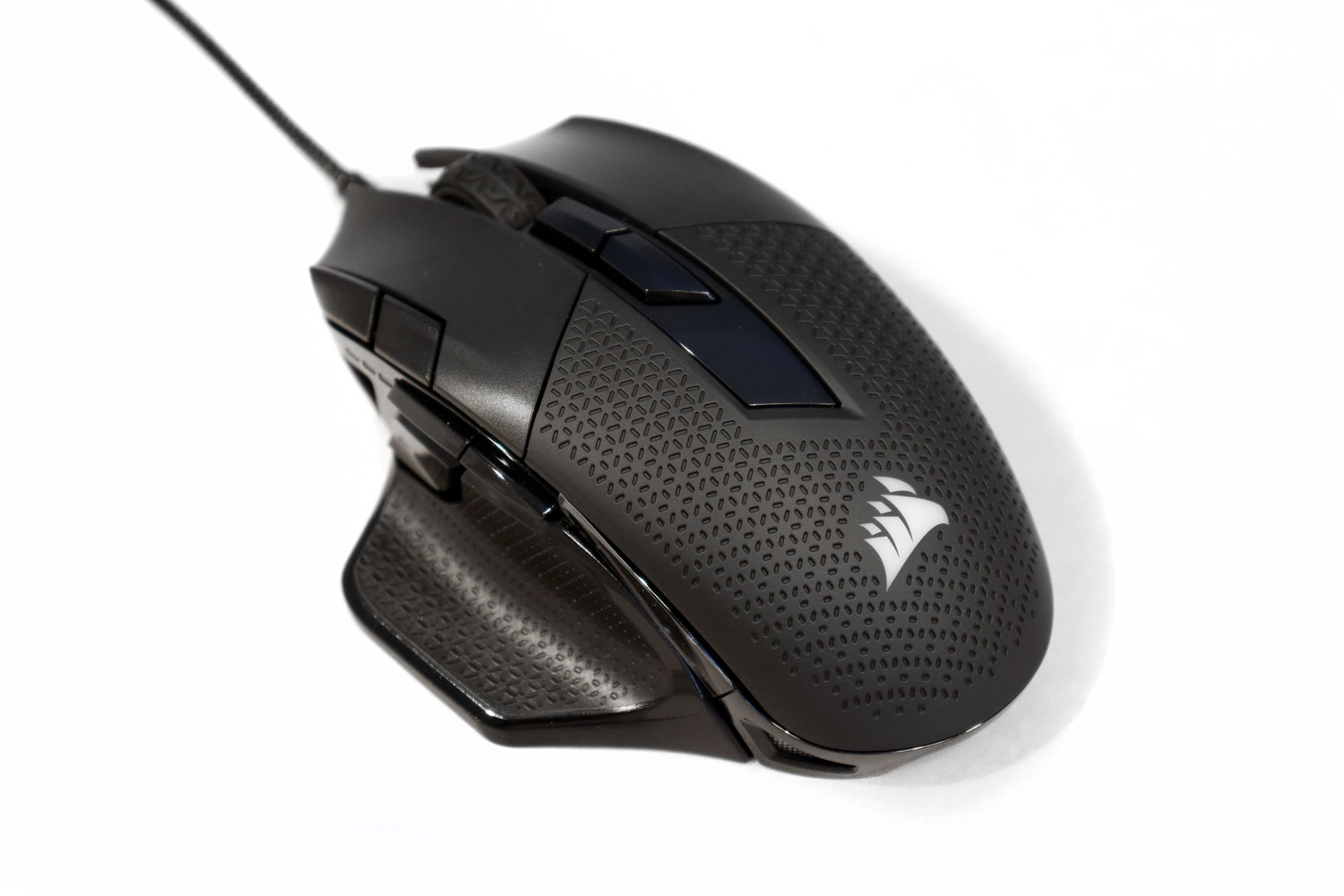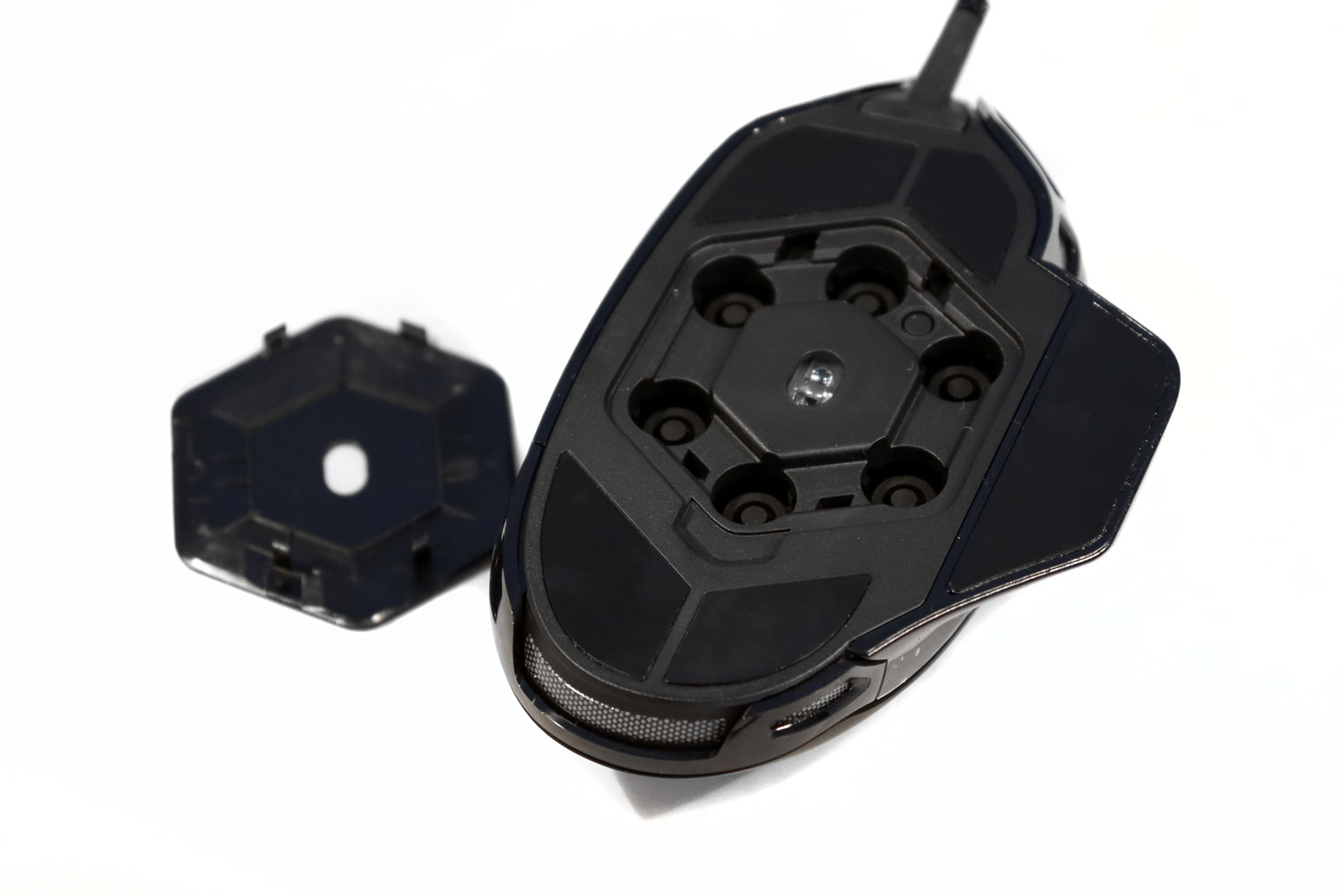Gaming mice names can be rather derivative, with various numerals tying down rodents to an expanded range, so it feels like a treat to take a look at a mouse called Night Sword, from Corsair. Like most other Corsair mice, this one features a powerful, proprietary Pixart sensor, an attractive look with RGB accents, all backed up by the excellent Corsair iCUE software.
But tick marks on a spec sheet don’t go far in the world of subjective peripheral use, so I spent some time getting to grips with the Night Sword to see how it holds up in both real world gaming and basic office tasks.
Chunky comfort at a stretch
The Night Sword is not quite the biggest mouse I’ve ever used, but it’s far from the smallest. It’s designed with palm grippers in mind, so it has a bulbous shape which looms up in the middle and provides a comfortable grip, whether you’re using a palm or finger style hold. Claw works too, although it doesn’t feel as comfortable as the others and that places your finger tips even further from the additional buttons the Night Sword comes equipped with.
There are ten in total, and reaching some of them isn’t easy, whatever grip style you opt for. The sniper button in particular feels like you’d need giant mitts to reach without an uncomfortable stretch, and the DPI selector buttons (by default) on the far-left of the mouse feel awkward to reach. If you do have long enough digits to reach them, I feel like the centrally located buttons, behind the scroll wheel, might become the problematic buttons for you.
But the main left/right click buttons and standard side buttons are all within easy reach and the former are clickable right back at the base of where they separate from the main body, meaning that even if you do struggle to reach some buttons (as I did) the main functions of the mouse aren’t inhibited at all.
Don’t expect to whip this mouse around like you might with some super-light gaming mice, though. This one weighs in at 115 grams by default and optional weights provide an additional 22 grams if you desire. The Night Sword doesn’t feel heavy, but it does have some heft to it. If you like your mice robust, this could be a great choice for you.
Fast and precise

Pixart’s close relationship with Corsair means that we see a number of optical sensors in Corsair mice that are unique to them, and though the PMW3391 shows up in a few Corsair mice, you won’t find it anywhere else. That’s good news for Corsair, because this one’s a good’n. It’s fast, accurate, with a impressively broad sensitivity range of 100 – 18,000 DPI and is adjustable by the single digits, so no matter what your particular flavor of sensitivity, this mouse can handle it.
It also enjoys additional optional features that can be triggered in the Corsair iCUE software, like angle snapping, pointer precision enhancement, and surface calibration. I used the mouse with and without these features. While I didn’t find them particularly enhancing, but they were a nice touch nonetheless.
The main left/right buttons of the Night Sword use Omron switches which are responsive and accurate, giving us no concerns over mis-clicks or delayed reactions. Whether I was working in Photoshop or fragging enemies in a high-speed FPS games, the Night Sword was nimble and responsive, despite its heft. There is still some sensor detection at a couple of millimeters off of the surface, but not enough to be of real concern.
The only hiccup I did run into is what appeared to be some minor drag from the PTFE feet. It’s as if their sharpened edges would sometimes catch on the cloth mat. Not problematically so, but enough that you notice it. This isn’t a concern on metal, glass, plastic, or wood surfaces, and would likely work itself out over time as the PTFE edges wear down a little, but I’d have liked to have seen some smoother edges to the feet to avoid this.
Tweak it all

As with all of Corsair’s recent mice, the Night Sword is fully supported by its comprehensive and intuitive iCUE software. This package combines button customization, with toggleable options, and RGB lighting adjustments that can all be tweaked within a handful of menus.
One enjoyable addition with this particular mouse is Corsair’s weight tuning. As you add in weights, the software automatically detects them and how much they’ve added to the overall weight of the mouse. That way you can tune their placement and have a visual representation of the effect they have on the Night Sword.
There are a few RGB zones to adjust on this mouse, including front and rear grills and there are a plethora of pre-loaded lighting options if you just want something cool to play right from the get go. But if you want to micromanage it all, you can customize it to the nth degree, triggering different effects based on profile, or key press.
Best for big, but good for all
The Corsair Night Sword is a solid gaming mouse, in every sense of the word. It’s durable, capable, and hefty, with a shape that seems best suited to those with larger hands — although those may miss any sort of pinky rest, which seems like an oversight with this sort of design. Button placement is innovative, but ultimately far from ideal, meaning whatever grip type you use there will be some that are in uncomfortable positions.
But even with those minor limitations, there is little else to complain about with the Night Sword. The sensor’s fantastic, the overall feel comfortable, and the left/right buttons are fast and responsive, making the Night Sword great for gaming and office work. You can even tune the RGB lighting to help you get in the mood for each of those uses, too.
At around $80, it’s not the cheapest mouse out there and some of the competition at this price makes it a hard sell, but the Night Sword holds its own enough that if you like what Corsair does and want another peripheral to add to your iCUE catalog, this is one of the better ones.
For a great alternative with a similar feel, I loved my time with the Logitech G502 Lightspeed. It’s expensive, but has a hell of a lot going for it.






